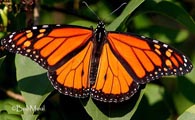Native Plants
Search for native plants by scientific name, common name or family. If you are not sure what you are looking for, try the Combination Search or our Recommended Species lists.
Asclepias verticillata
Asclepias verticillata L.
Whorled Milkweed, Eastern Whorled Milkweed
Asclepiadaceae (Milkweed Family)
Synonym(s):
USDA Symbol: asve
USDA Native Status: L48 (N), CAN (N)
Whorled milkweed is a single-stemmed, unbranched perennial, 1-3 ft. tall. The narrow, linear leaves are whorled along the stem. Small, greenish-white flowers occur in flat-topped clusters on the upper part of the stem.
Because of its toxicity to livestock, this plant is considered a weed in range areas.
Plant Characteristics
Duration: PerennialHabit: Herb
Root Type: Tap
Leaf Complexity: Simple
Leaf Shape: Linear
Leaf Pubescence: Glabrous
Leaf Margin: Entire
Leaf Apex: Acute
Fruit Type: Follicle
Size Notes: Up to about 3 feet tall.
Flower: Flowers 2 mm
Fruit: 10 cm
Bloom Information
Bloom Color: White , GreenBloom Time: May , Jun , Jul , Aug , Sep
Distribution
USA: AL , AR , AZ , CT , DC , DE , FL , GA , IA , IL , IN , KS , KY , LA , MA , MD , MI , MN , MO , MS , MT , NC , ND , NE , NJ , NM , NY , OH , OK , PA , RI , SC , SD , TN , TX , VA , VT , WI , WV , WYCanada: MB , ON , SK
Native Distribution: MA to MT, s. to FL & e. TX; also s. Canada
Native Habitat: Woodland
Growing Conditions
Water Use: LowLight Requirement: Sun , Part Shade
Soil Moisture: Dry
Soil Description: Sandy, clayey or rocky soils.
Conditions Comments: Whorled milkweed is one of the more poisonous or the milkweeds to livestock. It is therefore considered a weed in range areas.
Benefit
Warning: POISONOUS PARTS: All parts. Toxic only in large quantities. Syptoms include, vomiting, stupor, weakness, spasms. Toxic Principle: Cardiac glycosides and resinoids. (Poisonous Plants of N.C. State)Conspicuous Flowers: yes
Attracts: Butterflies
Larval Host: Monarch
Value to Beneficial Insects
Special Value to Native BeesSpecial Value to Bumble Bees
Special Value to Honey Bees
Supports Conservation Biological Control
This information was provided by the Pollinator Program at The Xerces Society for Invertebrate Conservation.
Butterflies and Moths of North America (BAMONA)
|
Monarch (Danaus plexippus)  Larval Host |
Propagation
Description: Plant seeds outside in the fall. Seedlings will germinate immediately but may not flower until the second year.Commercially Avail: yes
National Wetland Indicator Status
| Region: | AGCP | AK | AW | CB | EMP | GP | HI | MW | NCNE | WMVE |
| Status: | FACU | FACU | FACU | FACU | FACU | UPL | FACU |
From the National Organizations Directory
According to the species list provided by Affiliate Organizations, this plant is on display at the following locations:Delaware Nature Society - Hockessin, DE
Stengl Biological Research Station - Smithville, TX
Natural Biodiversity - Johnstown, PA
NPSOT - Austin Chapter - Austin, TX
Mt. Cuba Center - Hockessin, DE
Bibliography
Bibref 1186 - Field Guide to Moths of Eastern North America (2005) Covell, C.V., Jr.Bibref 1185 - Field Guide to Western Butterflies (Peterson Field Guides) (1999) Opler, P.A. and A.B. Wright
Bibref 946 - Gardening with Prairie Plants: How to Create Beautiful Native Landscapes (2002) Wasowski, Sally
Bibref 841 - Native Alternatives to Invasive Plants (2006) Burrell, C. C.
Search More Titles in Bibliography
Research Literature
Reslit 456 - Spatial and temporal genetic structure of Asclepias verticillata (whorled milkweed) among prairie patches in a forested landscape (1996) S. A. Fore and S. I. GuttmanReslit 546 - Ambulatory Use of Ventro-Lateral Abdominal Ampullae by Larvae of Labidomera Clivicollis (Kirby) (Coleoptera: Chrysomelidae: Chrysomelinae) (2009) G. T. Gustafson and C. S. Chaboo
Reslit 1551 - The Rare Asclepias texana and its Widespread Sister Species, A. perennis, are Self-Incompatible and Interfertile (1998) R. Wyatt, A. L. Edwards, S. R. Lipow and C. T. Ive...
Reslit 2192 - Genetic structure of Helianthus occidentalis (Asteraceae) in a preserve with fragmented habitat (1999) S. A. Fore and S. I. Guttman
Reslit 2386 - Nectar Production and Flower Visitors of Asclepias verticillata (1979) M. F. Willson, R. I. Bertin and P. W. Price
This information was provided by the Florida WIldflower Foundation.
Search More Titles in Research Literature
Additional resources
USDA: Find Asclepias verticillata in USDA PlantsFNA: Find Asclepias verticillata in the Flora of North America (if available)
Google: Search Google for Asclepias verticillata
Metadata
Record Modified: 2018-11-14Research By: TWC Staff